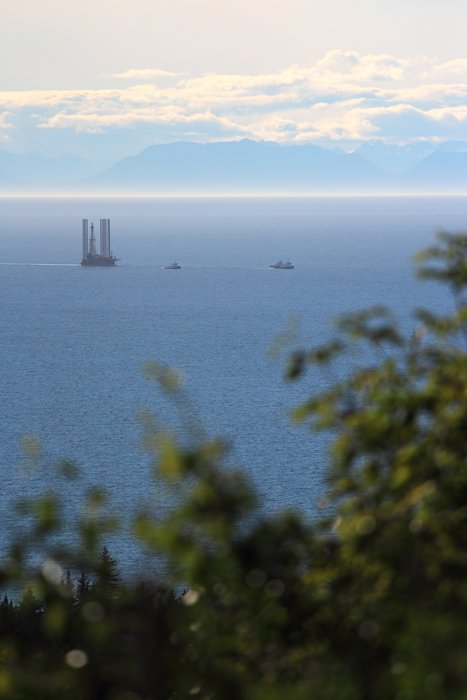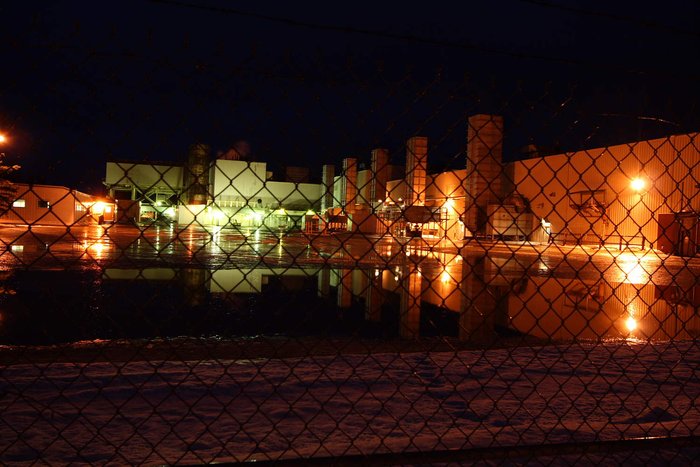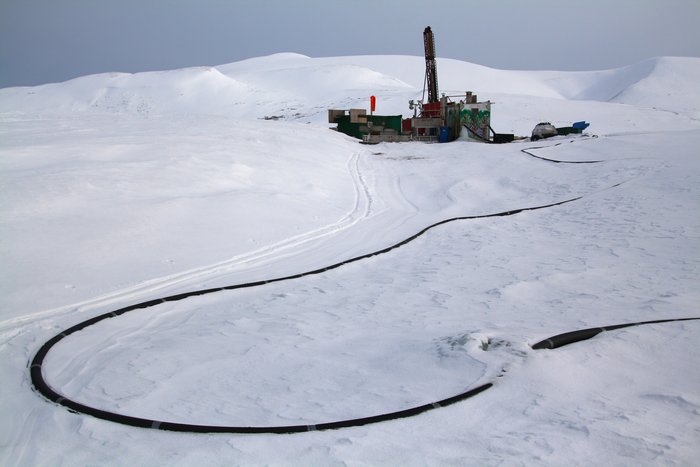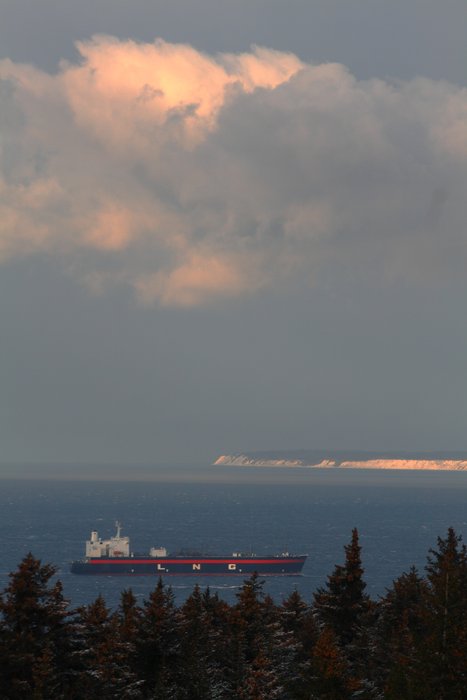
- Natural Gas in Cook Inlet, and the Pitfalls of Short-Term Planning
- There’s rarely a “Later” camp.
- The Case for Leaving Wealth in the Ground
- Planning for Empty
Natural Gas in Cook Inlet, and the Pitfalls of Short-Term Planning

Over half of Alaska’s electricity comes from Cook Inlet natural gas. It’s powering the computer I’m typing this on. And it’s running out. By 2017, we’re supposed to have only half of what we need, an annual shortfall of 50 billion cubic feet.
People are less worried about this now than they were just a few months ago, as new discoveries come online. But the fact remains that the easy gas is gone - what is left will be more expensive to extract, and some may not prove economic to extract at all.
Read more about the history and future of Natural Gas in Cook Inlet.
50 billion cubic feet sounds like an enormous gap. But that shortfall is only around 2% of what we’ve exported in the past 40 years. If all the gas had been kept in state, we could have filled that “production gap” for decades beyond the projected shortfall.
Why have we spent the past several decades exporting trillions of tons of natural gas, only to find ourselves suddenly scrambling for enough of the stuff to keep the lights on?
For any natural resource extraction project, there’s usually a debate. And the two sides often line up along the lines of “Now” or “Never.” The “Now” camp touts jobs and tax revenue, and the benefits of economic development. The “Never” camp points out pollution, and the negative impacts to ecosystems, communities, and other industries.
There’s rarely a “Later” camp.
Why not? I’m not an economist, but this is something I’ve wondered about for years. If the public owns the gas and oil and metals under the land, leaving them in the ground is a form of savings account - with interest in the form of increasing resource prices. Extraction, on the other hand, really is spending the wealth - removing that resource for good.

From the oil/gas company perspective, I can understand why they probably aren’t worried about saving resources for later. They’ll do whatever brings the most profit - likely extracting the resource as quickly as possible, selling it for the highest price possible, then picking up and moving to a new spot.
From the state perspective, it’s not so simple. The state owns all the gas in Cook Inlet. Actually the public does. And the state has a constitutional mandate to use all public resources in the best interest of all Alaskans:
“The legislature shall provide for the utilization, development, and conservation of all natural resources belonging to the State, including land and waters, for the maximum benefit of its people.”
So we exported gas as quickly as possible while failing to secure an alternative source of heat and power for state residents. If new gas plays don’t work out very soon, we’ll need to turn around and start importing LNG to the same facility that exported for 40 years. Was that really the best we could do?

The Case for Leaving Wealth in the Ground
Alaska is a resource extraction state. How does an economy dependent on natural resources avoid a seemingly-inevitable boom and bust?
Boom and bust is how it generally works, here and in the rest of the world. Resources are discovered and quickly depleted. Then it’s either on to the next jackpot, or on to an economic decline.
Wouldn’t it be nice if there were some gas, oil, and metals for our kids and for future generations of Alaskans to use? All these resources will only be more valuable the longer we wait to extract them. If you’re manufacturing a product, it makes sense to step up production as demand and prices rise. But if you’re selling a finite pool of a non-renewable resource, you might get more money for your product if you parcel it out - leaving some to sell when prices rise even further.
Chances are, the techniques used to extract all our resources will only become more efficient, effective, and environmentally friendly with time. Some of the painful tradeoffs between ecosystem damage and industrial development might simply disappear in the future.
It’s not just oil and gas. Say we don’t build a Pebble Mine now. In another 100 years, maybe we’ll have mining techniques that eliminate the (impossible) necessity to safely store toxic wastes forever. Metals may be even more valuable then. Maybe we’ll have a tax structure that gives the state more value for its minerals. Wouldn’t that be better for Alaskans?

Unfortunately, such projects are approved or denied based on a flurry of paperwork and regulatory check boxes, politics, and lawsuits. Such decisions are not based on whether they represent the best use of our land and resources in the long term.
Planning for Empty
In Cook Inlet, what would have happened if we had parceled out gas leases to spread out development for our own use rather than exporting? Maybe we’d have a lot more left now to burn in our power plants and homes. But maybe it wouldn’t have worked.

Slow and steady seems like an attractive idea. But it’s possible that without the LNG exports, the oil companies wouldn’t have found Cook Inlet gas profitable to develop at all - that the export potential is what led to development of gas for in-state use. I don’t know how likely that is. Either way, a slow and steady approach would have missed all the economic activity that came from the exports.
Still, if you’re going to depend on the extraction of a non-renewable resource, you ought to have a plan for what happens when that resource runs dry. 40 years ago, Alaska could have started investing the money from lease sales and taxes in renewable energy projects for the Railbelt, rendering the eventual depletion of gas a much smaller problem. But we didn’t. Now, funding for those projects will be much more of a struggle and time is also a problem as the gas runs out.
And the gas in Cook Inlet is dwarfed by a much bigger problem: Alaska’s entire economy and government is dependent on North Slope oil. We’ve done OK at saving some of the money in anticipation of that oil eventually being gone. But have we done enough to develop an economy beyond the raw extraction of resources?
From oil to metal to fish, Alaska has a lot of natural resources, including some in decline, and some yet untapped. Can we learn from our own (and the rest of the world’s) mistakes, and treat the rest of them like the irreplaceable savings account that they are?
Created: Jan. 19, 2018